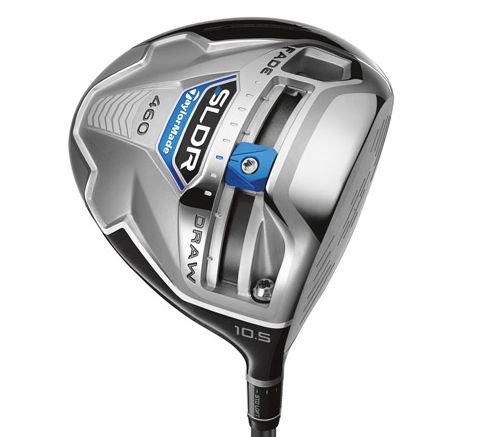 Starting with the release of the R5 driver, TaylorMade has been pushing the envelope of shifting ball flight by using removable weights in the head of the driver. This has been adapted to a point where the weights were put on either side of the driver in order to coax a draw or a fade depending on what the golfer wanted to play. With the release of the SLDR driver TaylorMade has taken ball flight to a new level. The weight to move is now only a single weight and is set in a slider at the bottom of the clubhead.
Starting with the release of the R5 driver, TaylorMade has been pushing the envelope of shifting ball flight by using removable weights in the head of the driver. This has been adapted to a point where the weights were put on either side of the driver in order to coax a draw or a fade depending on what the golfer wanted to play. With the release of the SLDR driver TaylorMade has taken ball flight to a new level. The weight to move is now only a single weight and is set in a slider at the bottom of the clubhead.
TaylorMade also introduced a number of other improvements in order to provide a driver that would help them ensure their number one ranking on the PGA Tour. For this review I was given a 10.5 degree driver with a regular shaft. I was lucky enough to get to take this driver for a spin and here are a few of my thoughts.
Technology
TaylorMade has been innovating and improving their driver design for the past few years and now is regarded as one of the technology leaders among club manufactures. The SLDR driver has plenty of technology in addition to the slider weight that is the main focal point of the clubhead. The first change is moving the center of gravity of the clubhead lower and more forward in the club. This means that to hit the ball farther traditionally the golfer would try to achieve this by lowering the loft of the clubhead. TaylorMade says with the SLDR driver many golfers are increasing the loft rather than decreasing it.
They name three of their staff golfers, Dustin Johnson, when he started using the SLDR driver he went from a 9 degree driver to a 10.5 in the SLDR. 1.5 degrees is a pretty significant increase to a tour pro. Jason Day went from a 9 degree to a 10 degree, and the biggest change this year’s U.S. Open winner Justin Rose went from 8.75 all the way to 10.5. Justin Rose had this to say about the driver and the loft:
“Love the deep face and with that you can play more loft. And whenever you look down at more loft, it’s a club that looks a lot easier to hit.”
Justin Rose
TaylorMade claims that moving the COG forward is completely revolutionary in the club design business because it has often been thought that the COG should be moved back in order to help the golfer get the ball into the air. The idea with the SLDR is to optimize the golfer launch conditions by moving the COG forward which promotes more ball speed and less spin. Now golfers can increase the loft on the driver and not pay a penalty of a loss in distance.
TaylorMade continued to utilize the loft sleeve technology that they introduced with the RocketBallz Stage 2 which allows plus or minus 1.5 degrees of loft in either direction along with upright settings as well. The nice feature here is that shafts that may have been originally built for either the R1 or the RocketBallz Stage 2 can now be utilized with the SLDR driver as well. For me this was a great feature because I used the R1 shaft that I already had. Plus the adjustability that is provided gives the golfer the ability to tune the loft of the club to their swing.
The last piece of technology is the most widely discussed when it comes to the SLDR is the single moveable weight at the bottom of the clubhead. The weight can be moved into twenty one positions providing what TaylorMade calls up to thirty yards of ball flight adjustability. Before really only a few different weight options were available, but with the SLDR the golfer can move the weight for a more fine control of ball flight. The movable weight moves horizontally across the clubhead from the fade position all the way to the draw position.
Simply by using the TaylorMade wrench the golfer can shift the weight into the twenty one positions to dial in their preferred ball flight. The weight slides along a track that is built into the clubhead and has markers but onto the clubhead to tell the club-fitter or golfer how the weight position will affect ball flight. TaylorMade claims that having this control is a truly revolutionary method for changing the ball flight with one single weight.
Esthetics
Since TaylorMade released the R11 a few years ago they have been hell bent on painting the driver world white. All subsequent driver from the R11 have been “ghosted” until earlier this year it seems that TaylorMade has bowed to the pressure of folks not liking the white color and came out with a limited edition black R1. Now with the release of the SLDR they have gone back to an even more traditional looking club design strategy. I have been lucky enough to do the last few reviews of the TaylorMade drivers and I can freely admit that I started out hating the white drivers, but after a while I have started to like the confident feeling you get from the white driver. I thought when I first saw pictures of the grey more standard looking SLDR driver that I did not like it. I first got it out of the box and it was a very nostalgic feeling, it reminded me of my favorite TaylorMade driver of all time the R510 TP.
The look of the clubhead is very traditional in shape. The face of the driver is very deep and inspires confidence when the golfer puts the driver next to the ball. The face of the driver is a matte steel finish and has a few groves put into the face. The color scheme of different colors of gray’s and an electric blue is quite a departure from what TaylorMade has been doing lately with white and green, white and yellow, white and orange. The colors are very subtle understated and traditional. I very much doubt anyone would keep this out of their bag because of the color scheme.
The top of the driver is done in a dark gray metallic finish which then is coated with a clear coat to give it a finish reminiscent of a car. To designate the address position of the driver there is a small TaylorMade logo done in a gray color lighter than the main clubhead. At the back of the top of the club there is a sliver cap which covers the back three inches of the driver when looking at the club from above. This is given a top coat of small notches which is more for looks than adding any functional value. The silver tab is outlined in a shiny metal coating that is small enough not to reflect any light while the club is at address.
The back of club also has a SLDR logo done in silver and blue which is the main color theme for the entire product. Beneath the logo is what looks like a measuring tape without the numbers. At the back of the club near the heel is a phrase “Tuned Distance” painted into the clubhead. Both of these decals on the club are small enough not to bother you while playing the club.
Turn the clubhead over reveals a very busy and colorful bottom to the SLDR driver. The first thing your eyes will be drawn to is the moveable weight. It is a very bright blue color and has a silver screw placed in the middle of it. The edges that face the back of the club are tapered to give the weight that appears as though it is pointing to the mark that you select to have the weight at. The slot which contains the weight is surprisingly deep. It is done in a silver cover and along the backside of the slot are markers at about one quarter of an inch distance apart. The marker for neutral is done in blue and the remaining markers are done with white paintfill. At the end of the slot towards the heel the word “DRAW” is done in all capital letters and with no paintfill and towards the toe the word “FADE” all capitals. This is done to tell the golfer when the weight is put in these respective positions what the ball flight should be. At the toe end of the weight slot is a thumb size hole in the bottom of the clubhead. There is no indication that I can find to determine what this hole is doing, likely it is a counterbalance done by the club designer to optimize the weight of the clubhead. The heel of the club also has a small hole but this is done to accommodate the screw for changing the shaft or loft options on the clubhead.
Right behind the weight slot in the direction of the rear of the club is a badge with the SLDR logo with the lettering done in silver and the back ground in black and the subtle blue that TaylorMade has used for the SLDR coloring. Beyond the badge the size of the club is indicated with ‘460′ done in big black lettering the badge continues with a staircase like affect to the back of the club. The back of the clubhead is made to look like a robotic piece of machinery, very industrial looking is the comment I hear the most.
The toe of the club has a large TaylorMade logo done in the light gray that most of the other lettering is done in. The heel has the loft indicated in the same light gray as well. The loft sleeve for the stock shaft is similar to the sleeve for the Rocketballz Stage 2. The shaft is done in the light gray and blue colors and is very nice design. As with the rest of the club the shaft is made to not stand out as TaylorMade has done in the past with some of the other shafts. The headcover is done mostly in white with the sock portion done in black with a blue ring near the bottom and in the top part both black and blue are mixed into the design.
Playability and Feel
The rumors that I had been hearing regarding this club was that the face was extremely hot. The ball was launching off the face of this driver. I believe much of this talk was regarding the lower more penetrating ball flight that this driver provides. It does have what many would call a low boring trajectory compared to other driver with similar lofts. So the claim by TaylorMade that this driver gives a lower launch with higher lofts has some degree of merit. I am a pretty high ball hitter so I found myself adjusting the loft sleeve to lower lofts even it had the lower trajectory. I would probably recommend to most golfers that they take the advice from TaylorMade and get a higher loft than they would normally get. So if you use a 9.5 today consider getting the 10.5 with this driver.
The feel of the club is very solid when hit squarely on the face. The feel when I hit the club on the heel and toe was not as forgiving as the R1 or the RBZ Stage 2 driver. I would rank it as middle of the road in terms of forgiveness but I would warn higher handicap golfers that the club was probably designed for mid to low handicap golfers.
The big question on everyone’s mind, is does the moveable weight in the bottom of the club work, and the answer from my perspective is a resounding mostly. When I had the weight in the draw position the ball definitely moved left, in my case a bit more than one would probably like. When the weight was in the fade position the face was very often open, usually for me a push fade. It does not produce a specific ball flight per say but it does help to open or close the clubface dependent on where the weight is put. For sure this adds an element of adjustability that was not available before because there are so many positions for the weight to be put in.
One downside is twice the weight came loose while swinging the club on the range. Luckily both these cases were on the range but if on the course I am not sure what I would do. It means I would probably need to run into the pro shop to borrow the wrench. This was a little concerning. It is entirely possible that I did this on my own by not properly screwing the weight in, but the club is unusable if it happens to a golfer mid round and they are not near a wrench because the weight moves all around in the backswing and downswing and gives a very unnerving feeling during the swing. I think for most people this is not an issue because you can lock the weight in during your clubfitting and not move it for the life of the club and it may never be an issue.
The SLDR is not any longer than the R1 or RBZ Stage 2, I would say equal to the R1 in terms of distance. That being said I did pick up a few yards with the R1 so it is likely a bit longer than most other drivers I have tried. It does seem to have a ‘sweet spot’ where when you catch it at that spot the ball rockets off the clubface and can go a few more yards. The sound of the driver was muted and very well done. It is not overly loud and will make even the traditionalists happy.
The stock shaft that was included with the driver was a regular flex and this was a terrible fit for me. I struggled to hit the driver anywhere near the fairway. I switched in the stock shaft from the R1 that I had and began to hit the driver much better. As with most drivers careful consideration of the shaft is key.
Conclusion
In closing I think that TaylorMade has created a club that does for the most part what they advertised it to do. The moveable weight allows you to open and may help you to close the clubface and combined with the proper swing path give you the desired ball flight. The lower COG does give the driver a more boring trajectory which will likely be preferred by the better players. The rumors of the face being hot were also true, but I doubt many golfers who switch will pick up big chunks of yardage.
I think that TaylorMade was attempting to make a driver targeted to the better players who wanted to get away from the white and crazy graphics that the R1 was offering. The muted tones and traditional coloring scheme makes this driver appeal to all golfers and does not stick out on the range. This is a very solid club and I would recommend it to golfers considering upgrades from R11 or R11s drivers, or anybody who loved the R510 TP as I did.

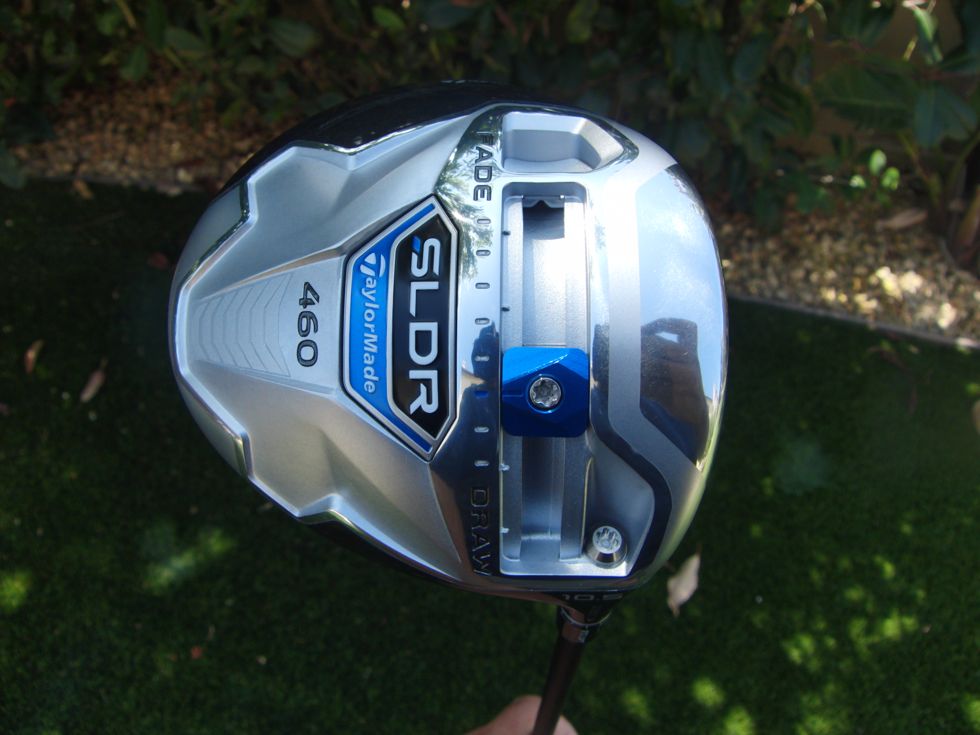

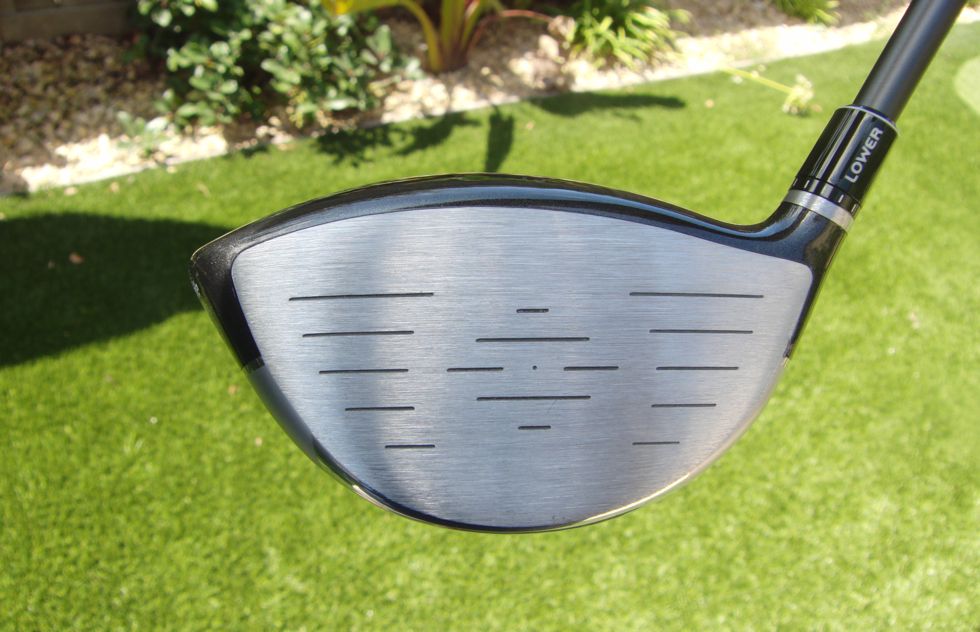
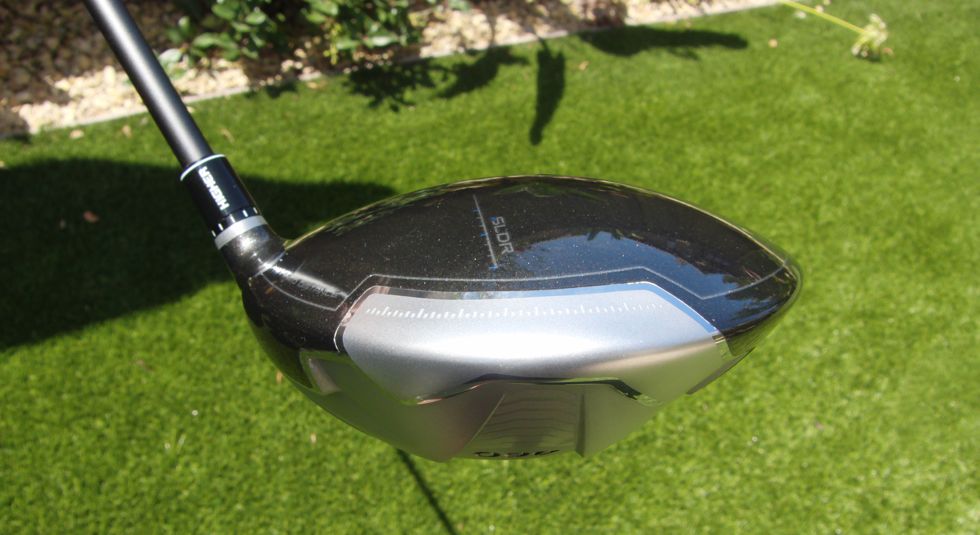
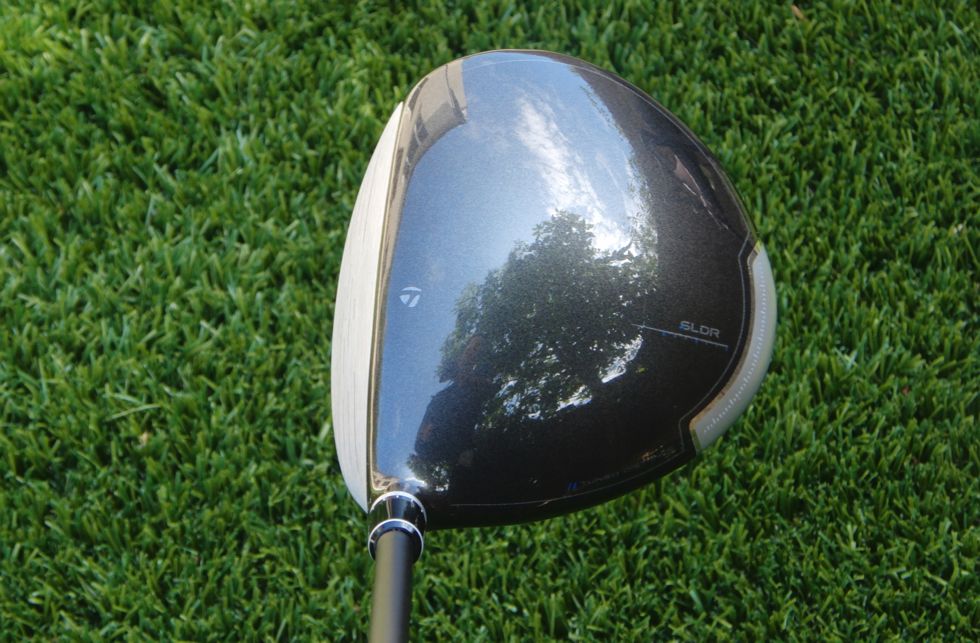
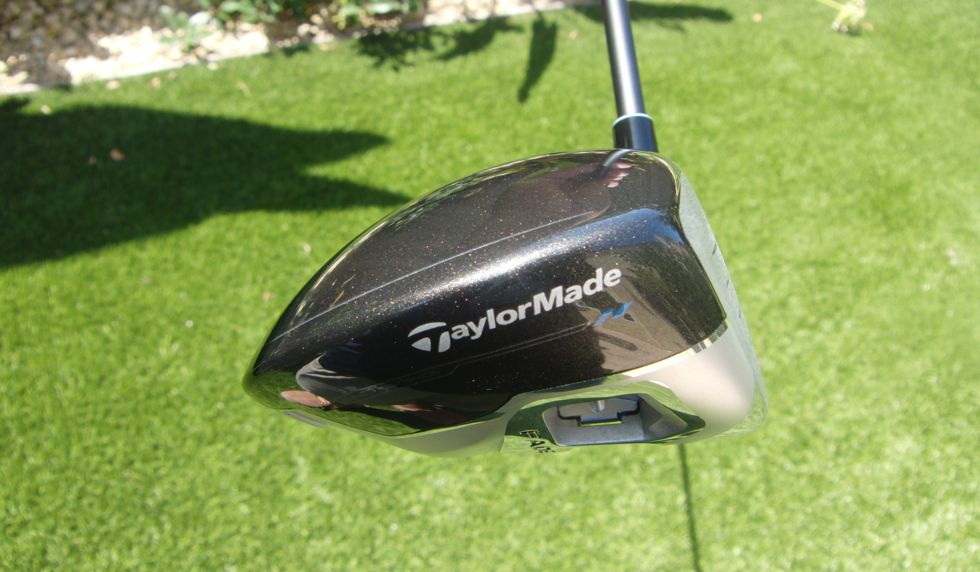
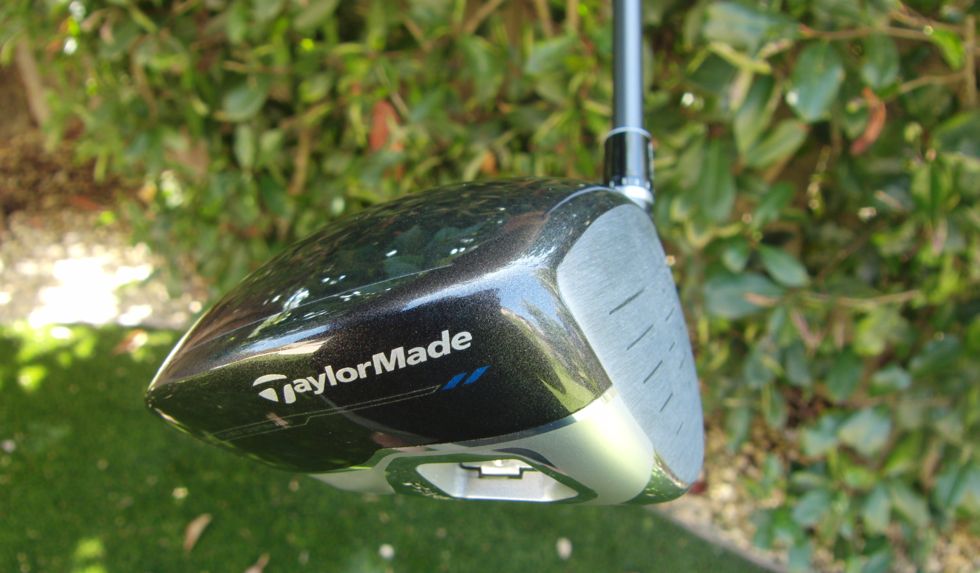
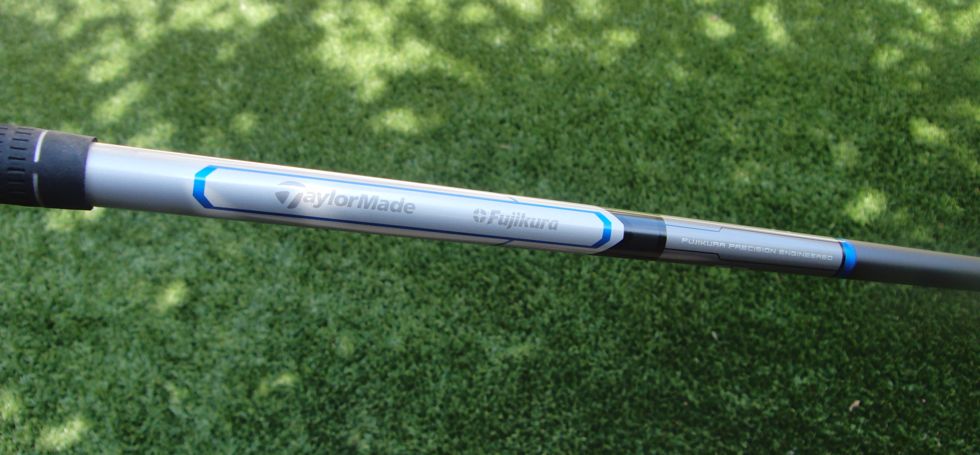
Nice review! I’ll look forward to pickin one up on sale in 2 yrs!
I’m not bashing TM, (yes I am) but with all this new “technology” coming out, how come we are not hitting the ball 600 yards yet?
In 3 months they will have the SLDR in white, black, orange, blue, green and they’ll probably custom paint it for you if you want. And how come they ave not come out with all these adjustments on irons? Oh yea, that’s coming next year! This is just getting crazy! How bout invest in some lessons and fix your swing!
Appreciate the fair and honest review. Although my club maker says this is the best TM driver in the last 7 years, I will not sell the R1 I’ve used, or the XHot I’ve picked up recently. I thought the R1 was not the most forgiving driver, and if the SLDR is less forgiving, I’m not about to go to it for 2 more yards on a perfect swing. I understand they’ve expanded the sweetspot so it is also lower on the face. Still, I’d go with a 12 and adjust to 13.5, but the lack of forgiveness has me waiting. I think TM lately has focused on the better player with more speed than regular Joes. I hope they come up with a second lineup, okay, that is now Adams, and if I want a TM-like product, perhaps I need to look there for more forgiveness and consistency. Thanks again.
@Mr. Desmond, I have heard the reviews from friends that this driver was so so good as you did. So I tried desperately to like this driver. But in the end it was mostly a detriment to my game. I did hit some lovely long drives, but for the most part I could not control it. I can say I hit the R1 straighter than this club. I do when hitting the screws hit this one farther, so I give up some distance but for the sake of control.
I think Taylormade has done some very innovative things for golf…But, I wonder what would happen if they released 1 driver a year or 1 every 2 years….World probably stop spinning, haha.
Heck, TM just introduced the JetSpeed – so that is most likely the Driver for the rest of us – forgiving, more spin, and high launch. Let’s see if they stock a decent shaft with it.
After this review and other reviews on YouTube, I am leaning toward getting this driver to replace my Xhot. I also just read the review in golf digest..20/20 best review ever on a driver..pretty incredible.
I’ve had this driver for just over a two months now. I would recommend this driver for better players. It is a bit hard to control at times, though I do find it sometimes easier to control on certain misses due to the fact it is so low spin.
Shots it really hurts the game on,
-Hook shots
-Push Slices
Where it doesn’t hurt the game as much,
-Thin shots, they just fly just about as far but much lower trajectory
-Pushes and pulls don’t go as far offline, and they still go a long way
-Windy conditions. The ball just doesn’t seem to get pushed around as much with this driver.
Like any driver, if you hit a bad shot its a bad shot. I would say that it is forgiving on miss hits distance wise due to the low spin. Its just a different sort of way of making up for the lower MOI due to the COG being so forward. I do like to be able to shape shots with this driver.
Look, I love it. Great classic look. Doesn’t look HUGE down by the ball. Very easy to line up.
Feel, probably one of the better Taylormade feeling clubs. I love the weighty feel of it when you strike one in the center. You can tell by the sound when you catch it. It very much reminds me of a Titleist driver in the sound. Its not the typical hallow pinging sound most drivers have.
Shafts, probably the best selection of shafts Taylormade has put in a driver. I went the TP version, and that Fujikura shaft is LEGIT!!!
Overall for my game this driver is a 9/10 for me. I would recommend getting fitted. Just don’t go and grab this driver with similar specs that your current driver has. It flights the ball in a totally different way. If you are a person who struggles with too much spin, this driver will help you out.
Probably wont be switching off this driver anytime soon.